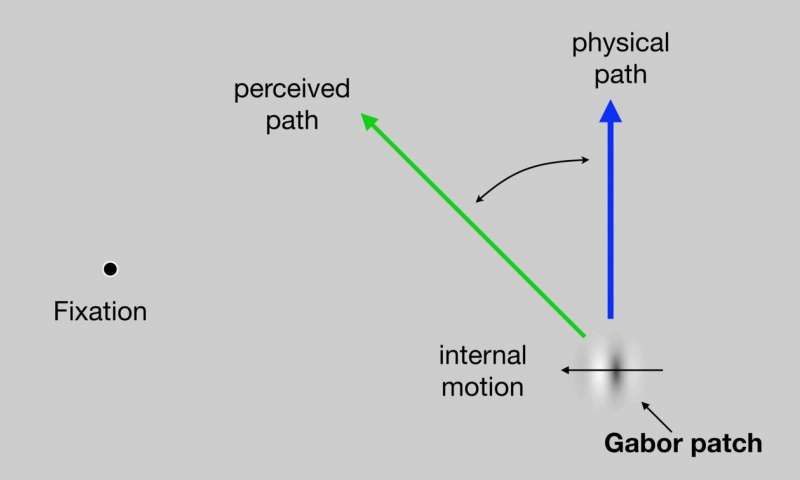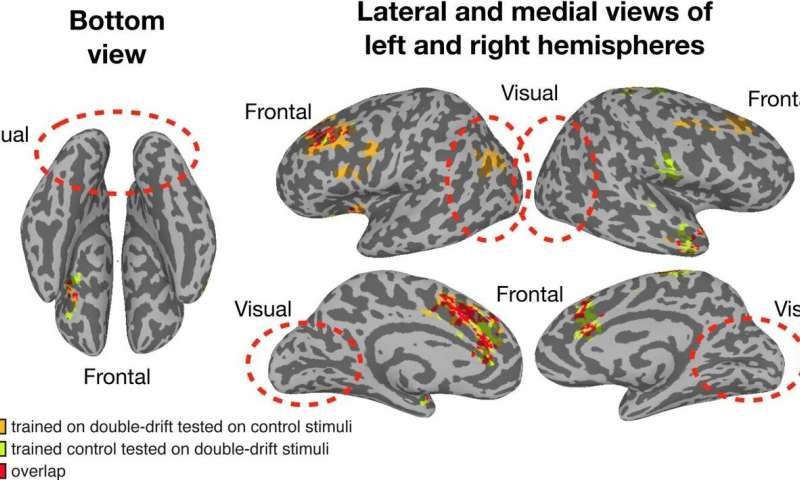
The results are significant given the ongoing debate among neuroscientists on what consciousness is and where it happens in the brain.
"Our study provides clear evidence that the visual system is not representing what we see but is representing the physical world," said lead author, Sirui Liu, a graduate student of psychological and brain sciences at Dartmouth. "What we see emerges later in the processing hierarchy, in the frontal areas of the brain that are not usually associated with visual processing."
To examine how the perception of position occurs in the brain, participants were presented with visual stimuli and asked to complete a series of behavioral tasks while in a functional magnetic resonance imaging (fMRI) scanner. For one of the tasks, participants were asked to stare at a fixed black dot on the left side of the computer screen inside the scanner while a dot that flickered between black and white, known as a Gabor patch, moved in the periphery. Participants were asked to identify the direction the patch was moving. The patch appears to move across the screen at a 45 degree angle, when in fact it is moving up and down in a vertical motion. Here, the perceived path is strikingly different from the actual physical path that lands on the retina. This creates a "double-drift" illusion. The direction of the drift was randomized across the trials, where it drifted either towards the left, right or remained static.
Using fMRI data and multivariate pattern analysis, a method for studying neural activation patterns, the team investigated where the perceived path, tilted left or right from vertical, appears in the brain. They wanted to determine where conscious perception emerges and how the brain codes this. On average, participants reported that the perceived motion path was different from the actual path by 45 degrees or more. The researchers found that while the visual system collects the data, the switch between coding the physical path and coding the perceived path (illusory path) takes place outside of the visual cortex all the way in the frontal areas, which are higher-order brain regions.
Start the movie and fixate on the black dot at the left. The small patch on the right moves up and down vertically, however, it may appear tilted to the left. It is the internal motion of the patch that drives its perceived path to appear tilted leftward compared to its physically vertical path.
Credit: Dartmouth College

More information: Sirui Liu et al. Neural Correlates of the Conscious Perception of Visual Location Lie Outside Visual Cortex, Current Biology (2019). DOI: 10.1016/j.cub.2019.10.033
Journal information: Current Biology



Comment: See also:
- Universal map of vision in the human brain
- Vision Scientists Demonstrate Innovative Learning Method
- The 'hard problem' of consciousness - Could consciousness all come down to the way things vibrate?
And check out SOTT radio's: